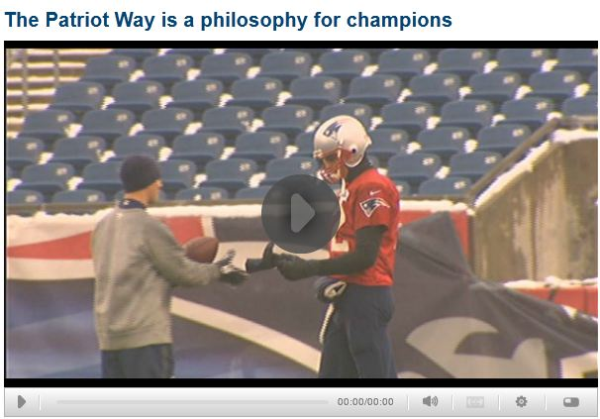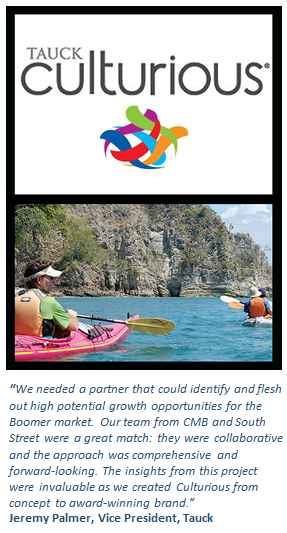Originally published on Loyalty 360
 I love New Year’s Resolutions! Every December, I enjoy reflecting on what I’ve learned in the last 12 months, and set goals to grow professionally and personally. On my list again this year, is studying opportunities to drive customer engagement—understanding how companies in the travel and hospitality industries can use new techniques and technologies to drive loyalty and ultimately profits.Every two years, Marketing Science Institute (MSI), a think-tank bridging academic theory and business practice, reaches out to thought leaders to set its priorities for upcoming research and conferences. MSI’s “Priority Topic” list reflects marketing’s key challenges and opportunities (see the full list here). Topics include: Big Data; insight into people as consumers; rethinking the journey to purchase (and beyond); and mobile’s impact on how people live their lives.
I love New Year’s Resolutions! Every December, I enjoy reflecting on what I’ve learned in the last 12 months, and set goals to grow professionally and personally. On my list again this year, is studying opportunities to drive customer engagement—understanding how companies in the travel and hospitality industries can use new techniques and technologies to drive loyalty and ultimately profits.Every two years, Marketing Science Institute (MSI), a think-tank bridging academic theory and business practice, reaches out to thought leaders to set its priorities for upcoming research and conferences. MSI’s “Priority Topic” list reflects marketing’s key challenges and opportunities (see the full list here). Topics include: Big Data; insight into people as consumers; rethinking the journey to purchase (and beyond); and mobile’s impact on how people live their lives.
If you were to improve your organization’s effectiveness in any of these areas, chances are good you will increase your customer’s engagement and loyalty. My “2013 professional resolution” is to share learnings about each of these Priority Topics.
Today, let’s tackle Big Data: leveraging the customer and market information available to drive business results. Although the topic of Big Data is just that— “Big,” the reality is when you break it down into small steps you can begin to drive customer engagement with data you already have on hand.
Big Data: The promise and the pitfalls
As computers and cell phones play an increasingly important role in consumers’ daily activities, mountains of data are collected and stored by travel and hospitality companies. From customer transactional (e.g., bookings, loyalty program redemptions, web site visits, call center logs) to interactional data (e.g., posts on Facebook) and observational data (e.g., networked sensors in cellphones or cars), the amount of data available for analysis is immense and expanding daily.
When it comes down to it, Big Data is useful only as we are able to glean useful business intelligence from all this data. The true value of Big Data (or any data for that matter) is not in the bits and bytes but in using the knowledge gained to help you make better decisions—to reduce the chances of making a bad decision and to help you “sleep better at night.” Companies can leverage big data in a number of ways including product and service development, process improvements, and revenue management.
Some companies who’ve found success with Big Data engagements (outside of travel and hospitality) include:
-
Amazon.com, eBay, and Google continuously test factors—from where to place buttons on a Web page to the sequence of content displayed—to determine what will increase sales and user engagement.
-
Capital One continues to refine its methods for segmenting credit card customers and for tailoring products to individual risk profiles. According to Nigel Morris, one of Capital One’s cofounders, the company’s multifunctional teams of financial analysts, IT specialists, and marketers conduct more than 65,000 tests each year, experimenting with combinations of market segments and new products.
-
The online grocer Fresh Direct adjusts prices and promotions daily (or even more frequently) based on data feeds from online transactions, visits by consumers to its website, and customer service interactions.
The pitfalls:
Quantum physics might be easier to explain than Big Data and brain surgery might be easier to do! Not only do you need to conceptualize the plan, structure the data, acquire the software and/or analysis tools but then you need to do the analysis. This is hard to get your head around!
Big Data exercises to predict customer behavior have been met with limited success. Netflix offered a $1 Million prize to the firm that could improve its movie selection algorithm by just 10%. Three years later, a group managed to create a model using available data however the formula was too complicated for Netflix to implement. If you haven’t read it yet take a few minutes to check out this HBR post that talks about the challenge of modeling consumer behavior: Big Data Hype (and reality).
Big Data: Baby steps
Here are some practical ideas for you to begin to look to incorporate some ‘Big Data’ activities into your 2013 plans:
-
Link financial data to your customer satisfaction. Understand the monetary value (in the short and long-term) of a satisfied guest to make informed decisions on investments and initiatives.
-
Build bridges between different data sources. First, use the same categories to code responses in your customer satisfaction study, social media analytics and your call center. Second, ensure a person is tagged with the same identifier in all data sources so you can look at a customer’s responses across the silos of your organization.
-
What? So What? Now what? Start your quest for decision-support with the end in mind. Get agreement on the “Essential Question” you are looking to address, and identify the supporting information (from all relevant sources) you need to support your recommendations. Make sure your recommendations answer the question: Now what action should I take?
We see a bright future for travel clients in using Big Data for building engagement and loyalty. Develop a plan to answer your Essential Questions and, then you will be in a better position to practically analyze the right data from the right data sources – applying a laser-like focus on the problem you are trying to solve.
How will you use Big Data (or any data for that matter) to drive customer engagement and loyalty in 2013?
Judy is VP of CMB's Travel & Entertainment practice and loves collaborating with clients on driving customer loyalty. She's the mom of two teens and the wife of an oyster farmer. Follow Judy on Twitter at @Judy_LC







 You may have heard the latest from Disney—they’re about to introduce a new “MagicBand” wristband letting wearers take advantage of perks like skipping to the front of the line for rides, as well as pay for meals, and purchase gifts. It offers guests the ability to leave the wallet and paper tickets at home and focus on having fun. The benefits to Disney can be huge, and a lot of people are seeing it that way; as one headline proclaimed: “
You may have heard the latest from Disney—they’re about to introduce a new “MagicBand” wristband letting wearers take advantage of perks like skipping to the front of the line for rides, as well as pay for meals, and purchase gifts. It offers guests the ability to leave the wallet and paper tickets at home and focus on having fun. The benefits to Disney can be huge, and a lot of people are seeing it that way; as one headline proclaimed: “